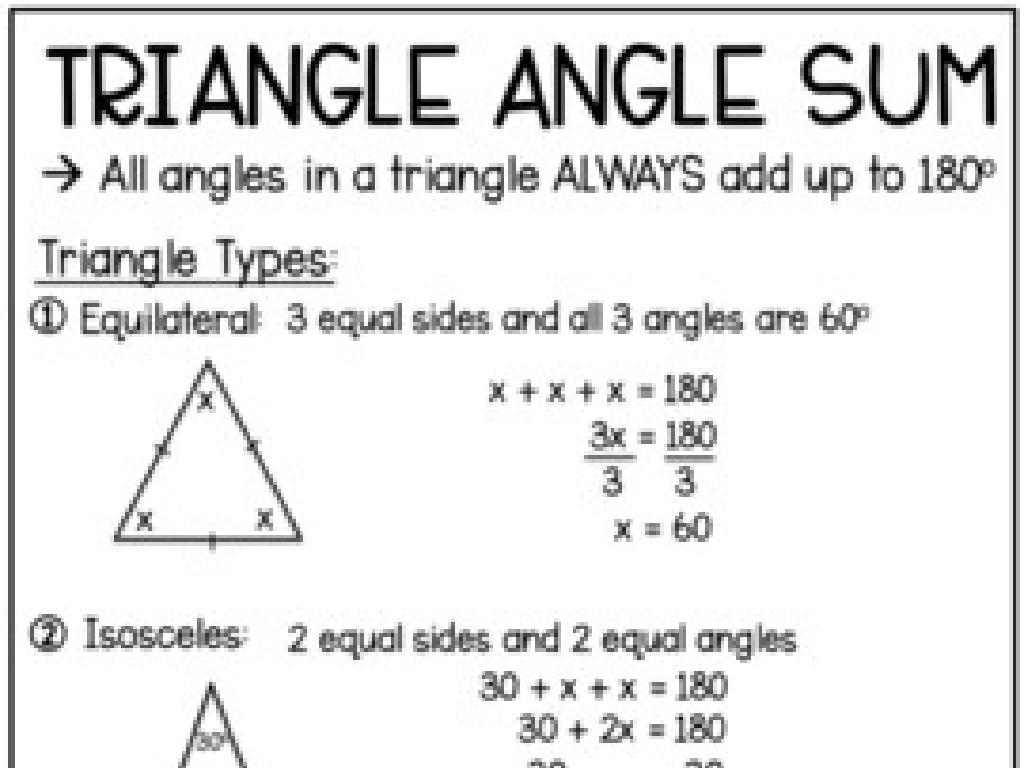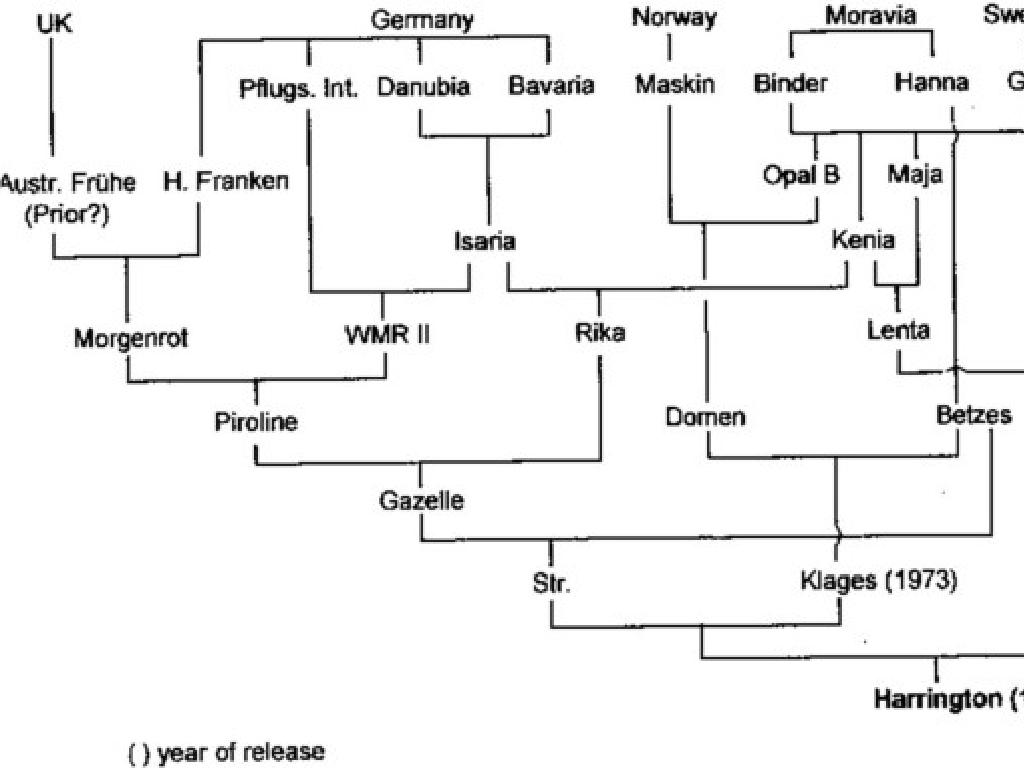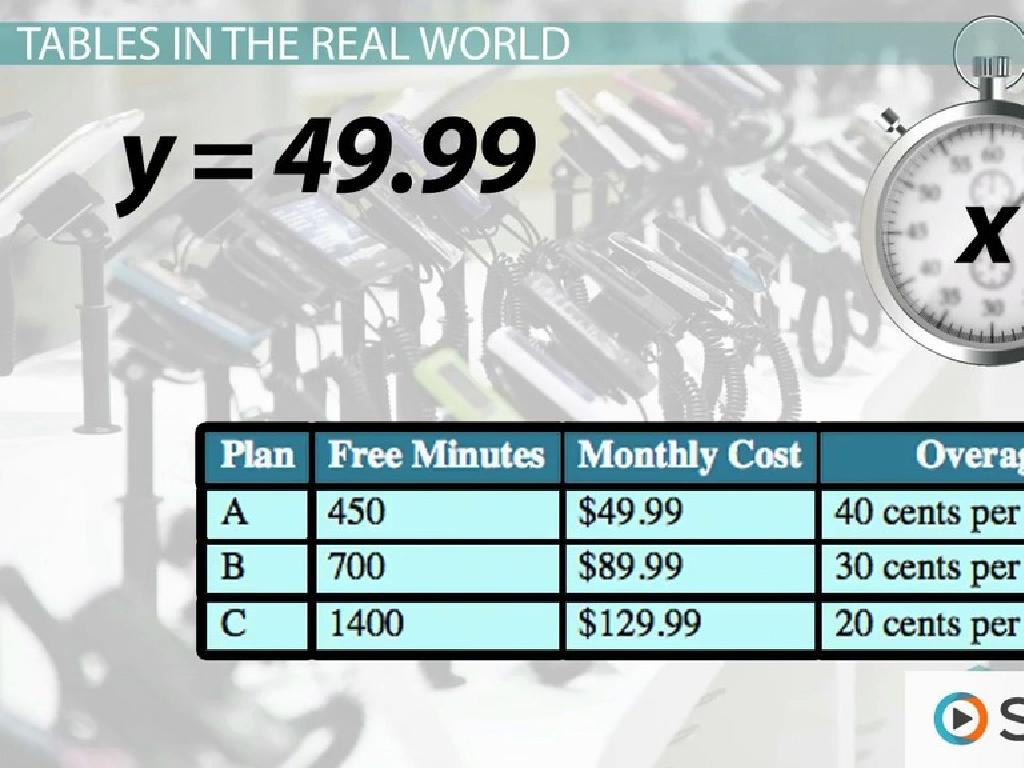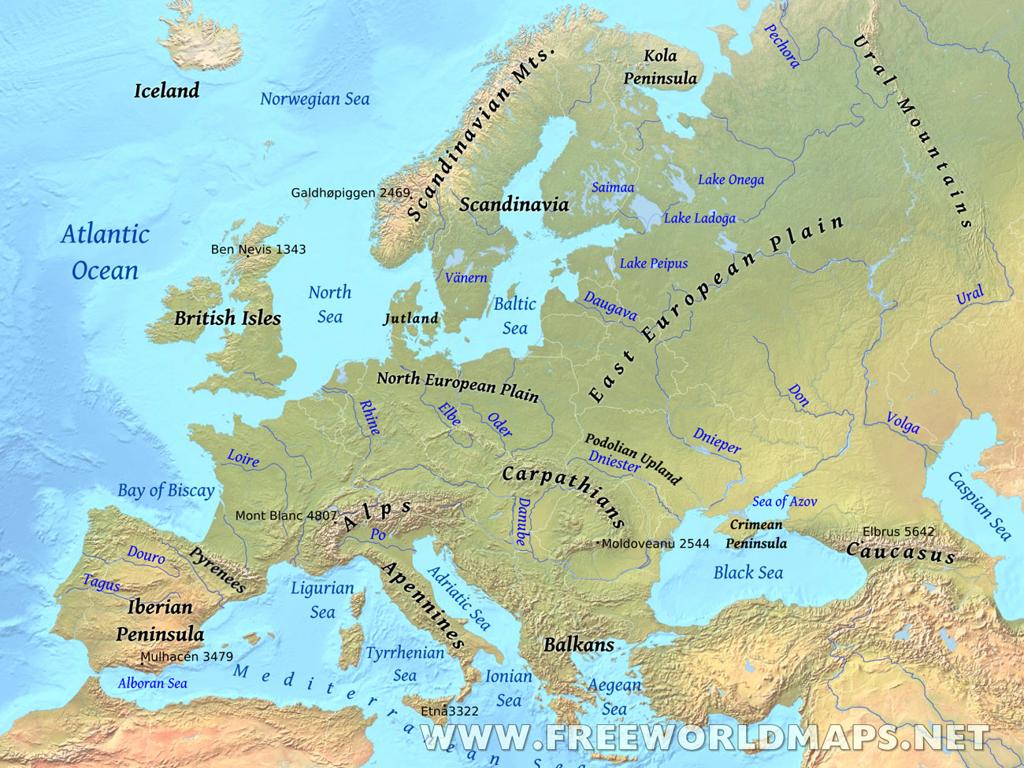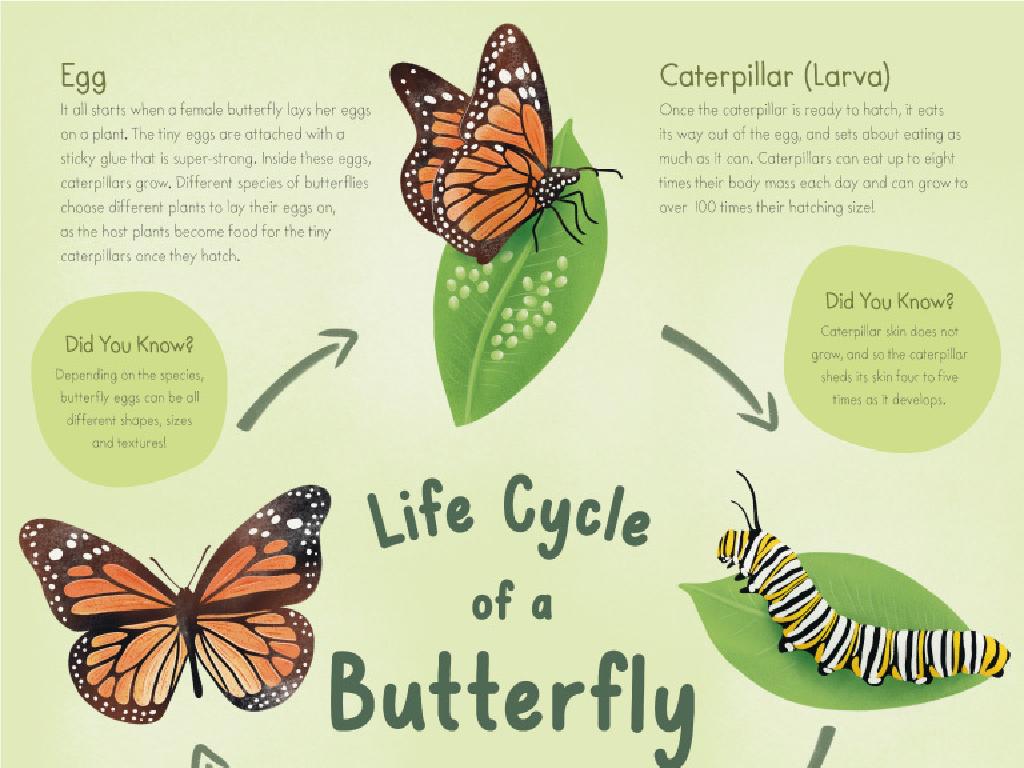Identify Control And Experimental Groups
Subject: Science
Grade: Seventh grade
Topic: Designing Experiments
Please LOG IN to download the presentation. Access is available to registered users only.
View More Content
Understanding Control & Experimental Groups
– Scientific Method Overview
– Defining Control & Experimental Groups
– Control group remains unchanged, experimental group receives the variable being tested.
– Significance of Group Roles
– These groups help to isolate the effects of the variable and validate the results.
– Real-world Experiment Example
– For instance, testing a new plant fertilizer: one group gets the fertilizer (experimental), the other doesn’t (control).
|
This slide introduces the concept of control and experimental groups within the framework of the scientific method. Begin with a brief review of the scientific method to set the context. Then, define the roles of control and experimental groups, emphasizing that the control group serves as a baseline to compare against the experimental group, which receives the treatment or condition being tested. Highlight the importance of these groups in ensuring the reliability of experimental results by eliminating variables that could lead to incorrect conclusions. Conclude with a relatable example, such as a plant growth experiment, to solidify students’ understanding. Encourage students to think of other scenarios where control and experimental groups could be applied.
Understanding Experiments in Science
– Define an experiment
– A test under controlled conditions to discover, demonstrate, or test a hypothesis.
– Purpose of experiments
– Experiments aim to uncover cause-and-effect relationships by testing predictions.
– Characteristics of experiments
– They involve variables, controls, and often a hypothesis.
– Simple experiment examples
– For instance, testing plant growth with different fertilizers or sunlight amounts.
|
This slide introduces the concept of an experiment to seventh-grade science students. An experiment is a methodical procedure carried out with the goal of verifying, falsifying, or establishing the validity of a hypothesis. Experiments provide insight into cause-and-effect by demonstrating what outcome occurs when a particular factor is manipulated. It’s crucial to discuss the importance of control and experimental groups in this context. Use simple, relatable examples to help students grasp the concept, such as experiments they can perform at home or in school, like observing the effects of sunlight on plant growth. Encourage students to think critically about how experiments are structured and why controls are necessary.
The Scientific Method: Experimentation
– Formulate a scientific question
– Conduct background research
– Create a testable hypothesis
– A hypothesis is an educated guess to answer the question
– Experiment to test hypothesis
– Identify control and experimental groups to compare results
|
This slide introduces students to the core steps of the scientific method, focusing on the latter stages involving hypothesis and experimentation. Students should understand that a scientific question guides the research process. Background research helps to formulate a hypothesis, which is then tested through experimentation. Emphasize the importance of control and experimental groups in an experiment, as they are critical for comparing results and drawing valid conclusions. Control groups remain unchanged, while experimental groups are subject to the variable being tested. This comparison allows scientists to determine the effect of the variable on the outcome. Encourage students to think of simple experiments they could conduct at home or in school where they can apply these concepts.
Control vs. Experimental Groups in Experiments
– Define a Control Group
– A group in an experiment where the variable is unchanged
– Define an Experimental Group
– A group where the variable is altered to test effects
– Roles in an experiment
– Control: compares results, Experimental: shows variable impact
– Comparing outcomes
|
This slide introduces the concept of control and experimental groups, which are crucial for understanding scientific experiments. The control group serves as a baseline, where variables are kept constant to provide a comparison against the experimental group. The experimental group is where one variable is changed to test the hypothesis. It’s important for students to grasp that without a control group, it would be difficult to determine if changes in the experimental group are due to the variable or other factors. Encourage students to think of simple experiments where they can apply this knowledge, such as growing plants with different amounts of sunlight.
Identifying Control & Experimental Groups
– Define control groups
– Control group remains under normal conditions for comparison
– Define experimental groups
– Experimental group receives the variable being tested
– Identifying groups in experiments
– Look for the group with and without the variable in an experiment
– Example experiment analysis
– Consider a plant growth experiment with sunlight as the variable
|
This slide aims to clarify the roles of control and experimental groups in scientific experiments. Control groups serve as a baseline, remaining unaltered to provide a comparison against the experimental group, which receives the specific variable being tested. When identifying these groups in an example, such as a plant growth experiment, students should look for the group that does not receive the variable (control) and the one that does (experimental). The control group would be plants grown without additional sunlight, while the experimental group would receive extra sunlight. This comparison allows scientists to observe the effects of the variable and draw conclusions. Encourage students to think critically about the importance of each group in validating the results of an experiment.
The Role of Control & Experimental Groups
– Why compare in experiments?
– Validating results with groups
– These groups help to ensure that the results of an experiment are due to the variable being tested.
– Control vs. Experimental group
– Control group remains unchanged, while the experimental group receives the variable being tested.
– Real-life example of their use
– Example: Testing a new medication, where one group receives the medication (experimental) and the other a placebo (control).
|
Understanding the purpose of control and experimental groups is crucial for designing valid experiments. By comparing these groups, scientists can determine the effect of the variable being tested. The control group serves as a baseline, not receiving the experimental treatment, while the experimental group does. This allows for a direct comparison to see if the treatment has an effect. For instance, in medical trials, the use of control and experimental groups is essential to evaluate the efficacy of new treatments. Encourage students to think of other scenarios where these groups could be important and discuss the ethical considerations when using human participants.
Designing Experiments: Control vs. Experimental Groups
– Steps to design a scientific experiment
– Choosing control and experimental groups
– Control group remains untreated for comparison
– Example: Plant growth with different fertilizers
– Use one plant with no fertilizer and another with the new fertilizer
– Analyzing results and drawing conclusions
– Compare plant growth to see the fertilizer’s effect
|
When designing an experiment, students should first understand the scientific method steps. Emphasize the importance of having a control group that does not receive the experimental treatment, which serves as a baseline for comparison. For example, if testing a new plant fertilizer, one plant would not receive the fertilizer (control) while another would (experimental group). After a set period, students would measure the growth of both plants to determine the effectiveness of the fertilizer. Encourage students to think critically about what variables must be kept constant between the groups to ensure a fair test and to consider what measurable outcomes they will use to compare the groups.
Class Activity: Design Your Own Experiment
– Form groups and choose a hypothesis
– Design an experiment with control and experimental groups
– Determine what stays the same (control) and what you change (experimental)
– Outline your experimental procedure
– Include steps, materials, and data you will collect
– Get ready to present your experiment
|
This activity aims to solidify students’ understanding of experimental design by having them apply concepts to a real-world scenario. Divide the class into small groups and guide them to brainstorm a testable hypothesis. Each group should identify their control group (what remains unchanged) and their experimental group (where one variable is changed). They should think about the materials they’ll need and the steps they’ll take to conduct the experiment, as well as how they’ll collect and record data. Encourage creativity but ensure they understand the importance of a controlled environment for accurate results. After the activity, each group will present their experiment design to the class, fostering peer learning and discussion.
Conclusion: Control & Experimental Groups
– Recap: Why groups matter
Control groups remain unchanged, providing a baseline for comparison.
– Review: Today’s key lessons
We explored how to identify and use control and experimental groups in an experiment.
– Engage: Q&A session
Time to ask questions or for further explanation on today’s content.
– Reflect: Apply what we learned
|
As we wrap up today’s lesson, it’s crucial to emphasize the importance of control and experimental groups in scientific experiments. The control group helps us see what would happen without the experimental treatment, while the experimental group is where we apply the variable we’re testing. Review the key points, such as how to identify these groups and their roles in an experiment. Open the floor for a Q&A session, allowing students to clarify any doubts and solidify their understanding. Finally, encourage students to think about how they can apply this knowledge in future experiments, fostering a deeper grasp of the scientific method.

